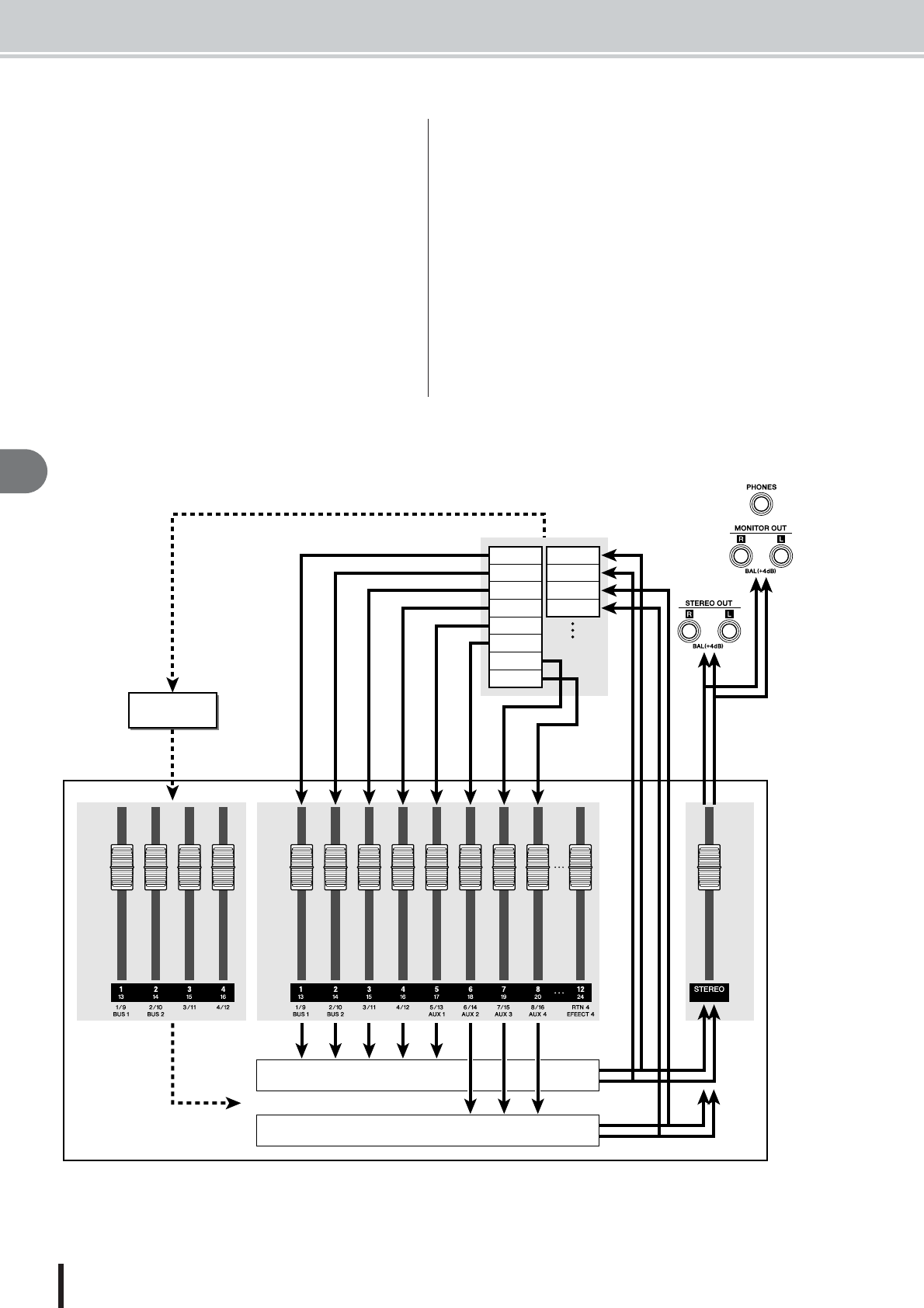
AW2400 Owner’s Manual
About mixdown and bouncing
Mixdown and bounce operations
74
8
“Bouncing” is the action of mixing the signals recorded
on multiple tracks, and recording the mixed result into one
to four vacant tracks. (This action is also called “ping-
pong recording.”) For example if you’ve recorded individ-
ual instruments of a drum set on multiple tracks, you can
bounce these tracks down to two tracks, and then switch
the bounce-source tracks to different virtual tracks so that
they will be free to record new instruments.
Bouncing differs from mixdown in the following ways.
• The destination of the track channels is Bus 1/Bus 2
rather than the stereo bus.
• The recording-destination will be a vacant audio
track (or tracks).
•You can’t add the signals of input channels.
The diagram below shows the signal flow during bounc-
ing. This diagram shows an example in which the track 1–
8 signals are bounced to tracks 9–12. After bouncing, you
can switch the virtual tracks for tracks 1–8, and use these
tracks to record other instrumental performances.
● Signal flow during bouncing
Track 9
Track 10
Track 11
Track 12
Track 1
Track 2
Track 3
Track 4
Track 5
Track 6
Track 7
Track 8
Internal Effects
Bus 1
Bus 2
Effect return
Recorder
section
Mixer section
Effect send
Effect return channels
Track channels
Stereo output channel


















